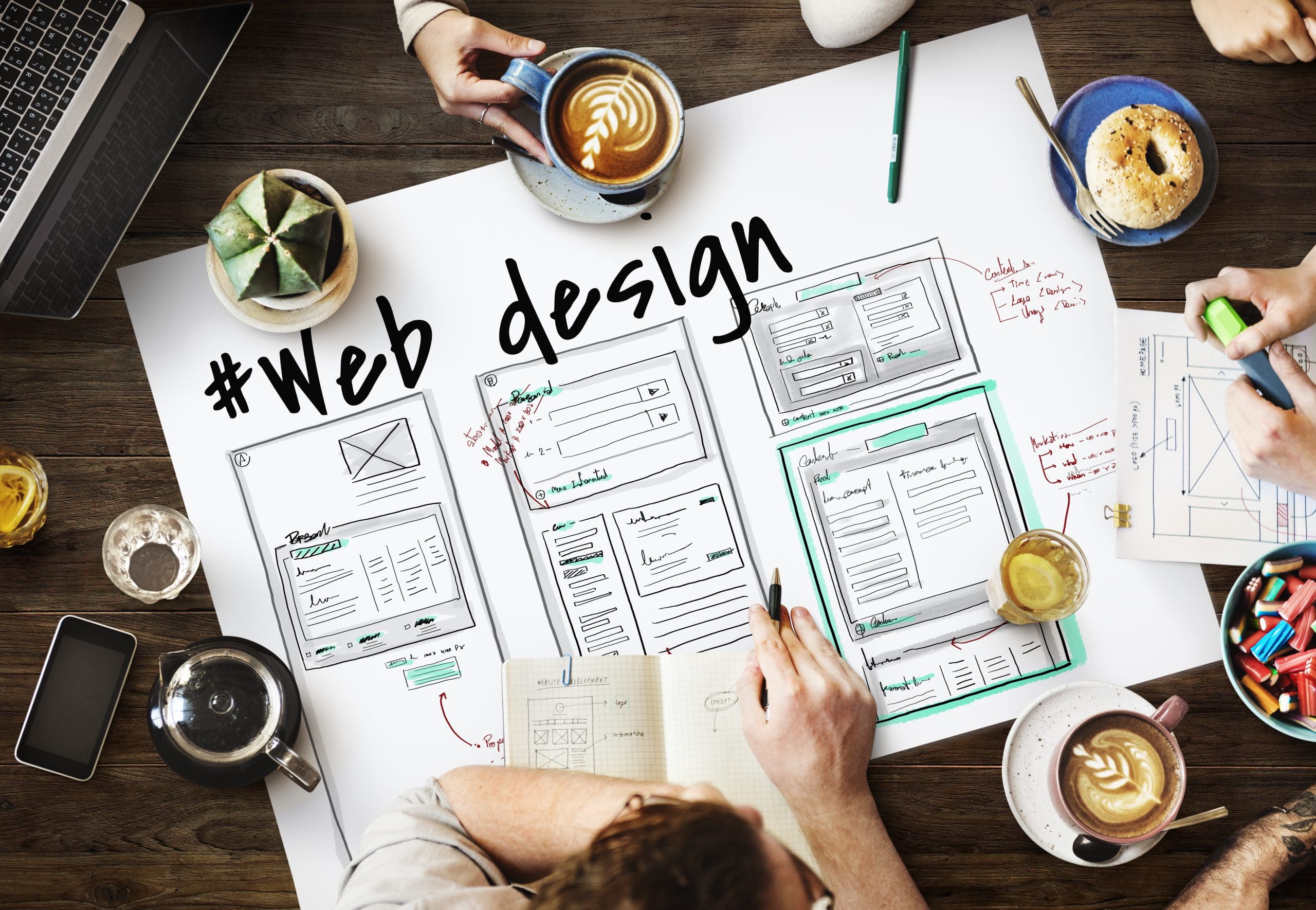Learning about the role of UX in modern Web Design Agency projects
The Significance of User Experience in Efficient Web Design Strategies
User experience (UX) serves as a foundation in reliable web design techniques. It forms just how users engage with a site, affecting their fulfillment and likelihood of returning. A properly designed UX can enhance interaction via user-friendly navigating and responsive layouts. Neglecting these aspects might lead to disappointment and enhanced bounce prices. Recognizing the ins and outs of UX is vital for designers aiming to produce compelling electronic experiences that resonate with diverse target markets. What elements truly drive effective user involvement?
Recognizing User Experience and Its Influence On Design
Although user experience (UX) is frequently viewed as a simple element of web design, it essentially forms exactly how customers connect with a website. UX includes all elements of the user's interaction, including use, ease of access, and total contentment. A positive UX promotes engagement, urging individuals to explore the site and return in the future. Alternatively, an adverse experience can bring about disappointment, leading to high bounce prices and lost chances for conversion.
Layout aspects like design, navigation, and content company play essential duties in forming this experience. Effective UX layout prepares for user needs and preferences, making sure that info is quickly obtainable and aesthetically enticing. Furthermore, comprehending user habits with analytics can give beneficial understandings, educating layout decisions that enhance use. Inevitably, a comprehensive understanding of UX allows designers to create internet sites that not only bring in individuals yet also advertise significant interactions that straighten with business objectives and user assumptions.
Key Concepts of Reliable User Experience
Efficient user experience depends upon several crucial concepts that enhance web site performance and engagement. User-friendly navigating design, responsive format essentials, and the relevance of aesthetic power structure are vital elements that add to a seamless interaction in between users and internet content. Understanding these principles permits designers to create more obtainable and straightforward electronic atmospheres.
User-friendly Navigating Design
When users come across a web site, instinctive navigating layout works as an important gateway to their general experience. Reliable navigating permits individuals to easily locate the info they look for, enhancing their communication with the website. Secret concepts include clear labeling, rational company, and regular placement of navigating elements. Labels need to be straightforward, enabling customers to forecast the material they will certainly find. A well-structured hierarchy assists individuals comprehend the relationship between different sections, directing them through the internet site effortlessly. In addition, responsive food selections and quickly obtainable links add to a fluid experience across devices. By focusing on intuitive navigating, developers can greatly minimize user disappointment and rise engagement, eventually promoting a favorable understanding of the internet site and its content.
Responsive Layout Fundamentals
A well-structured navigating system normally leads to the need for a receptive design, which is vital in today's diverse digital landscape. A responsive design assurances that websites function seamlessly across different tools, consisting of smart devices, desktops, and tablets. This versatility enhances user experience by allowing web content to be easily accessible and visually systematic, regardless of display size. Trick concepts of receptive layout include liquid grids, versatile photos, and media inquiries, which assist in perfect viewing. Additionally, focusing on touch-friendly components boosts communication on smart phones. By carrying out a receptive format, developers can suit customers' requirements, reduce bounce rates, and increase interaction. Eventually, a well-executed receptive style cultivates a favorable user experience, encouraging visitors to explore the internet site even more.
Aesthetic Hierarchy Significance
Visual hierarchy plays an essential duty in assisting individuals through a web site, making sure that vital info catches their focus. By purposefully making use of size, contrast, shade, and spacing, designers can develop a clear path for individuals to adhere to. Bigger components frequently attract the eye, indicating their value, while contrasting shades can highlight phone call to activity. In addition, regular placement and collection of related material improve comprehension, making navigating instinctive. Reliable usage of aesthetic power structure not just enhances use yet additionally sustains the total visual of the site, promoting a positive user experience. When customers can quickly identify one of the most critical info, they are more probable to involve with the material, bring about raised satisfaction and interaction with the site.
The Function of Usability in Web Design
Usability plays an essential role in web design, especially via navigating simplicity and adherence to ease of access standards. Efficient navigating enhances user complete satisfaction by permitting visitors to discover info rapidly and intuitively. Meeting accessibility requirements guarantees that all customers, regardless of their capacities, can properly connect with the website.
Navigation Simpleness
Simpleness in navigation stands as a keystone of efficient web design, greatly affecting user experience. A structured navigation system enables users to discover details swiftly and with ease, lowering disappointment and boosting complete satisfaction. Clear labeling and rational structure are vital aspects, assisting individuals easily with the internet site. Repetitive web links or extremely complex menus can disorient users, bring about enhanced bounce prices. Additionally, mobile responsiveness has to be considered, guaranteeing navigating continues to be simple throughout devices. Prioritizing essential web pages and you can find out more minimizing clutter better sustains user informative post involvement. Reliable navigating not just promotes a positive experience however likewise motivates customers to check out the website better, eventually causing higher conversion prices. Hereof, navigation simplicity acts as an essential factor in the general performance of web design approaches.
Accessibility Standards
User engagement is greatly improved when sites abide by ease of access standards, ensuring that all customers, despite their capabilities, can navigate and connect properly. Conformity with these criteria not just broadens the audience yet also boosts general user satisfaction. Easily accessible design integrates features such as text options for photos, key-board navigation, and sufficient shade contrast, which promote use by people with impairments. In addition, applying these requirements can favorably affect search engine optimization (SEARCH ENGINE OPTIMIZATION) by enhancing website framework and clarity. As web design progresses, prioritizing ease of access becomes essential in promoting a comprehensive digital setting. By accepting these criteria, developers contribute to a much more fair internet, inevitably driving user loyalty and interaction.
Importance of Responsive Design for User Engagement
As customers progressively gain access to web sites with a variety of gadgets, the significance of receptive style comes to be vital for involving users successfully. Responsive design assurances that a web site adjusts effortlessly to various display dimensions, supplying an optimal watching experience despite the gadget made use of. This adaptability enhances user interaction by facilitating much easier navigation and communication with web content.
When individuals come across a website that is responsive, they are more probable to stay much longer, explore even more, and return in the future. A well-designed receptive format minimizes the irritation usually related to zooming and scrolling on smaller sized screens, thereby minimizing bounce prices. Furthermore, responsive layout can favorably affect search engine positions, as internet search engine focus on mobile-friendly internet sites. In today's electronic landscape, where mobile usage continues to rise, implementing receptive layout is not simply helpful, but vital for preserving user interaction and guaranteeing a favorable experience throughout all gadgets.
Enhancing Load Times for Better User Complete Satisfaction

To enhance load times, internet developers ought to focus on optimizing pictures, leveraging web browser caching, and reducing HTTP demands. Additionally, employing Material Shipment Networks (CDNs) can accelerate material shipment by dispersing it across different informative post geographical areas. Streamlining code, such as compressing CSS and JavaScript data, further contributes to quicker packing rates.
Ultimately, a commitment to enhancing lots times not just boosts user fulfillment yet additionally strengthens brand loyalty and improves the likelihood of repeat sees. A swift, smooth experience is essential for keeping individuals and promoting favorable communications.
The Impact of Visual Hierarchy on User Interaction
Visual hierarchy works as a vital aspect in assisting user interaction on a site. By organizing content in a manner that focuses on info visually, developers can affect just how customers browse and engage with a website. This power structure is established with different layout methods, including dimension, spacing, contrast, and shade. As an example, bigger typefaces or strong colors accentuate important aspects, such as phone call to action or headlines, while restrained shades and smaller typefaces can suggest subordinate information.
Effective visual hierarchy helps customers quickly identify what is essential, decreasing cognitive load and improving usability. It permits intuitive navigation, making it less complicated for users to find what they require without irritation. As customers connect with a site, a well-structured aesthetic hierarchy promotes a much more satisfying experience, eventually leading to higher involvement and conversion rates. Designers have to focus on these concepts to develop a effective and user-centered internet environment.
Gauging User Experience: Strategies and devices

Regularly Asked Concerns
Exactly How Can I Improve My Website's User Experience on a Budget plan?
To boost an internet site's user experience on a spending plan, one can optimize page load rate, streamline navigation, apply responsive layout, boost material clearness, and gather user responses for continual refinements, ensuring a rewarding site visitor experience.
What Prevail User Experience Mistakes to Avoid in Web Design?
Typical user experience mistakes in web design include cluttered formats, inadequate navigation, slow loading times, lack of mobile responsiveness, overlooking access, inconsistent branding, and failing to prioritize user comments - Web Design services. Each can substantially prevent total website performance
How Often Should I Update My Website for Better User Experience?
Websites should be upgraded on a regular basis, preferably every couple of months, to preserve excellent user experience. Constant updates aid address functionality problems, revitalize content, and adapt to changing user needs, ensuring the site stays relevant and interesting.

Can User Experience Impact Search Engine Optimization Rankings on My Web site?
User experience can significantly influence SEO rankings, as online search engine prioritize internet sites that use seamless navigating, quick packing times, and interesting web content. A positive user experience can bring about lower bounce prices and higher search exposure.
What Role Does Availability Play in User Experience Style?
Accessibility plays an important role in user experience design by making certain that all individuals, regardless of abilities, can engage and navigate with a site successfully. This inclusivity improves overall satisfaction and involvement amongst diverse users.
User experience (UX) is typically viewed as a plain aspect of internet layout, it essentially forms exactly how customers interact with a web site. User involvement is significantly improved when internet sites stick to accessibility criteria, making certain that all individuals, regardless of their capacities, can browse and connect effectively. Determining user experience (UX) is necessary for recognizing how effectively a site satisfies the requirements of its individuals. Furthermore, functionality testing, where genuine users navigate the site while observers note difficulties, offers straight responses on user experience. Usual user experience errors in web design include cluttered formats, inadequate navigating, sluggish packing times, lack of mobile responsiveness, disregarding availability, inconsistent branding, and failing to prioritize user responses.